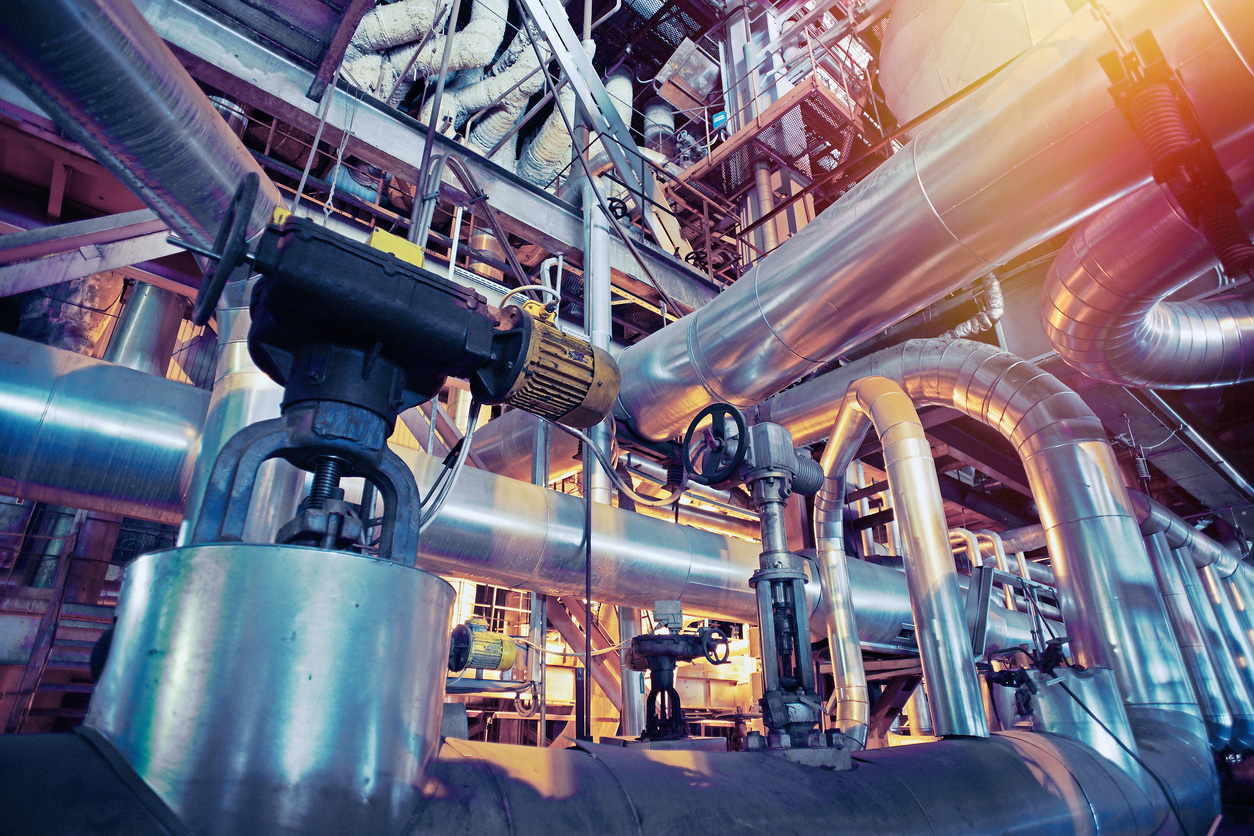BehrTech Blog
IoT ROI: The Impact of Your Wireless Connectivity Choice
The Industrial Internet of Things (IIoT) is weaving its way into almost every industry today, disrupting the way businesses and manufacturers have operated. All hype aside, embarking on an IIoT initiative is challenging. There is one thing all executives and decision-makers consider when justifying the business case for IIoT deployment and evaluating available technology options: cost.
Cost is a very tricky element as it transcends the immediate investment to incorporate other expenses along the lifespan of an IIoT network. In this regard, Total-Cost-of-Ownership (TCO) is a more accurate metric to rely on than the mere capital expenditure (CapEx). The TCO equation comprises of multiple elements which can be broadly grouped into two umbrella categories – the one-time upfront investment for designing, building and setting up an IIoT wireless architecture; and recurring costs for operating and maintaining it.
The IIoT wireless technology that you settle on is likely to impact each of the upfront and recurring TCO elements. As such, the right connectivity decision can help you effectively keep costs down to streamline IoT ROI. Note that the TCO variables explained in this guide focuses only on the RF communication network without considering the costs of the cloud and other application platforms.
UPFRONT INVESTMENT
Many companies often regard capital expenses on procuring IIoT devices and network infrastructure as the major slice of upfront investment. With this thinking, you are bypassing other important upfront costs that aren’t immediately tangible, which could erode your margins. Device development, network design, as well as installation and integration costs are TCO elements often overlooked when building and installing an IIoT network.
Device Development and Prototyping
In industrial environments, sensor devices must comply with very specific and rigorous requirements to ensure operational reliability and safety. For example, there can be hundreds of temperature sensor types available just with the precision level needed. Often times, it is extremely challenging, if not impossible to find a commercially available connected device that can fulfill all of your industrial specifications. That’s why an IIoT project often starts with device prototyping.
A prototype is developed using off-the-shelf components like RF modules, microcontrollers, sensing units, antennas, PCB boards, etc. Atop hardware design and mechanical engineering is firmware and application development alongside testing and certification. RF solutions with compatible plug-and-play rapid prototyping tools can greatly simplify and accelerate the development process to save your engineering costs. An example of such tools is the mikroBUS add-on board standard supported by a growing portfolio of more than 600 click boards. MikroBus-compliant clickables can be easily mixed and matched with each other to develop a tailor-made prototype in a straightforward and efficient manner.
Key Takeaway: Accelerate development with plug-and-play rapid prototyping tools (e.g. mikroBUS-standard click boards)
Network Design and Planning
Once you have your IIoT devices available, you’ll need to plan the layout of your wireless network. There are a number of aspects to be considered – how many devices and base stations are required, where they should be installed for optimal RF signals, how to power the devices and so on. Network design costs increase with the number of end devices and supporting infrastructure like base stations and repeaters, as well as the configuration and optimization complexity. The connectivity choice largely influences these elements.
Mesh networks based on short-range wireless technologies generally require much more configuration effort, compared to long-range networks with a star topology. For a mesh solution, you need to ensure devices are distributed densely enough for signals to propagate properly. On top of that, potential failures of strategically placed devices with heavy relaying traffic through them can shut down a major part of the network. In use cases requiring vast coverage and huge network capacity, it can be extremely challenging to plan and optimize the communication path of each mesh device.
Key Takeway: Simplify planning and configuration with a star topology network and minimize infrastructure requirements with long-range, scalable wireless technology.
CapEx / Hardware Procurement
Capital expenditure for hardware procurement is probably the most tangible TCO element. The physical network infrastructure commonly includes sensing devices, base stations/access points, repeaters (if applicable), antennas and any cabling needed. Again, your RF decision directly impacts the amount of equipment needed and thus, your CapEx.
As a general rule, the less supporting infrastructure like base stations and repeaters involved, the less expenditure on hardware, software licensing and cabling runs. Wireless solutions with long range and excellent penetration capability require fewer base stations to cover a vast, structurally dense industrial or commercial campus. Likewise, a robust radio link and large network capacity allow an individual base station to effectively support massive sensors without performance degradation.
On the device side, technologies like Low Power Wide Area Networks (LPWAN) have comparatively lower transceiver costs thanks to a simplified RF design. To best manage device costs as your IIoT network grows, it is important to opt for an industry-standard, software-driven wireless technology that doesn’t tie you down to a specific chipset vendor. Standardized technologies fuel global adoption and cross-vendor support, thereby reducing hardware prices and ensuring a sustainable supply of compatible components in the long run.
Key Takeaway: Ensure cross-vendor support with open-standard, software-driven RF connectivity and minimize infrastructure requirements with robust, long-range and scalable wireless technology.
Installation and Integration
The installation cost is proportional to how complex it is to set up the network and whether there is any production downtime involved. With highly retrofittable solutions, you can circumvent expensive shutdowns of the manufacturing line during installation. Low-power RF technologies with battery-operated end devices also help streamline installation complexity by eliminating the hassle of power wiring.
Besides the physical setup, you should also consider the integrability of your IIoT network into existing application systems and IT environment. Harnessing business values from digital architecture requires seamless data sharing across operational systems to derive and execute actionable insights. The more straightforward it is to transfer data to your chosen backend, the less training and labor resource required for IT setup and configuration. RESTful APIs and open source messaging protocols like MQTT and CoAP are powerful tools for a painless and straightforward integration.
Key Takeway: Avoid power wiring with battery-operated devices and simplify IT integration with an API-driven network architecture.
Reoccurring Operational Expenses
Operational expenses encompass ongoing costs associated with the day-to-day administration of your IIoT network. Over the network lifecycle, effective management of OpEx is critical to minimize the emergence of unexpected overhead that threatens to slow down IoT ROI and cut profits. Overall, there are three major OpEx as follows.
Network Management
Having your network up and running is not a one-time task; it requires ongoing management effort. Device on- and off-boarding, report generation, data backup, troubleshooting, firmware and security updates are just a few examples. Labor costs for network management depend on the scale of your IIoT deployment – typically the number of end devices and supporting infrastructure. Since the number of end devices is often fixed to your IIoT use cases, choosing a wireless technology that requires minimal supporting infrastructure (e.g. base stations, routers) is what you can do to simplify network management. As your IIoT network scales, a dedicated, API-driven network management tool for convenient administration and management of the entire data chain will also be necessary to keep costs and complexity in control.
Key Takeaway: Leverage a dedicated network management tool for simple and effective remote administration and troubleshooting
Device Connectivity
Each RF wireless solution has its own pricing model, yet there are a few key points to bear in mind regarding the cost of connecting your IIoT devices. First, public wireless services offered by mobile and other types of network operators often impose monthly access fees on top of data plans or subscription costs. While you don’t need to pay for base stations when using public networks, over time these ongoing access fees can easily outweigh the upfront infrastructure investment of private networks.
Second, it is important to align the connectivity cost of each device with its actual data usage. Often times, an IIoT sensor uses as little as tens of kilobytes per month. Many cellular data plans, on the other hand, start from megabyte-lower limits. This means you have to pay for more than what you actually need. Finally, connectivity costs reflect the cost of the respective wireless spectrum. Technologies operating in the licensed spectrum are inevitably associated with higher data transmission fees compared to those in the license-free spectrum.
Key Takeaway: Avoid ongoing access fees of public wireless services, align data costs with the actual usage and consider RF solutions operating in the license-free spectrum.
Maintenance
Battery replacement and recharge are a daunting maintenance task, especially when your IIoT network starts to scale to hundreds or even thousands of end devices. As such, opting for energy efficient RF connectivity that enables multi-year battery life, drastically reduces manual interventions and battery procurement. This results in massive savings on maintenance and power expenses.
Key Takeaway: Reduce manual interventions and battery costs with low-power connectivity.
Wrapping Up
Despite the vast heterogeneity in IIoT projects and use cases, the TCO elements of an IIoT network examined in this guide are applicable across industries and verticals. Having a clear understanding of potential cost factors will help you better anticipate IoT ROI and justify the long-term business case of your initiative. When designing an IIoT architecture, choosing the right wireless connectivity can enable significant upfront savings while helping streamline operational expenses over the network lifecycle. As a general rule, make sure you go for a solution with:
- An industry standard technology to circumvent vendor lock-in problems and keep hardware costs effectively low.
- Star topology and high scalability to minimize infrastructure requirements, simplify network design, planning and management, and accelerate IoT ROI by addressing multiple use cases with a unified architecture.
- High power efficiency to avoid the hassle of power wiring while lowering maintenance costs.
- Easy integration into your existing application systems and a dedicated network management tool to lower setup and management overhead.
Subscribe to Our Monthly Blog Roundup
Streamline IoT ROI with MYTHINGS Wireless Connectivity
Contact a MYTHINGS™ Platform Expert for more information or to book a demo.

















